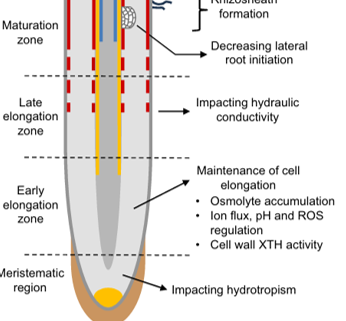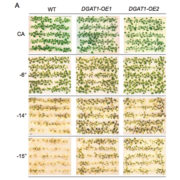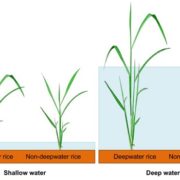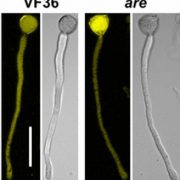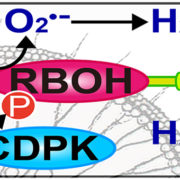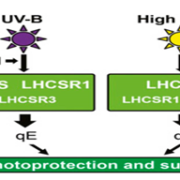Review: Root growth in response to water stress
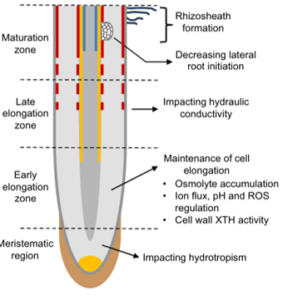 Maintaining root growth is a major plant adaptation to water deficit, enabling continued access to soil water. In a recent review, Voothuluru et al. discuss the inherent complexity of root systems in regard to water stress. Different root types, including primary, seminal, and nodal roots, show varying responses to water deficits, and the root system architecture (RSA) significantly impacts plant performance under water limitation. Growth responses within root growth zones, such as cell production and expansion, determine RSA. Osmotic adjustment is vital for maintaining cell expansion under water stress, with increased solute levels preventing tissue dehydration. Axial water delivery to growth zones and aquaporin-regulated water transport are crucial. Lateral root development, influenced by water availability, shows a biphasic response: promotion under mild deficits and inhibition under severe stress. Interestingly, roots can grow towards water molecules, sometimes defying gravity, in a process called hydrotropism. Because signal sensing, transduction, and root bending involve the entire growth zone and multiple cell types on both sides of the root, further studies with spatial resolution at the tissue- or cell-specific level are needed. The authors observe that improved understanding of root growth will enhance crop productivity under drought. (Summary by Kumanan N Govaichelvan, @NGKumanan) Plant Cell 10.1093/plcell/koae055
Maintaining root growth is a major plant adaptation to water deficit, enabling continued access to soil water. In a recent review, Voothuluru et al. discuss the inherent complexity of root systems in regard to water stress. Different root types, including primary, seminal, and nodal roots, show varying responses to water deficits, and the root system architecture (RSA) significantly impacts plant performance under water limitation. Growth responses within root growth zones, such as cell production and expansion, determine RSA. Osmotic adjustment is vital for maintaining cell expansion under water stress, with increased solute levels preventing tissue dehydration. Axial water delivery to growth zones and aquaporin-regulated water transport are crucial. Lateral root development, influenced by water availability, shows a biphasic response: promotion under mild deficits and inhibition under severe stress. Interestingly, roots can grow towards water molecules, sometimes defying gravity, in a process called hydrotropism. Because signal sensing, transduction, and root bending involve the entire growth zone and multiple cell types on both sides of the root, further studies with spatial resolution at the tissue- or cell-specific level are needed. The authors observe that improved understanding of root growth will enhance crop productivity under drought. (Summary by Kumanan N Govaichelvan, @NGKumanan) Plant Cell 10.1093/plcell/koae055


